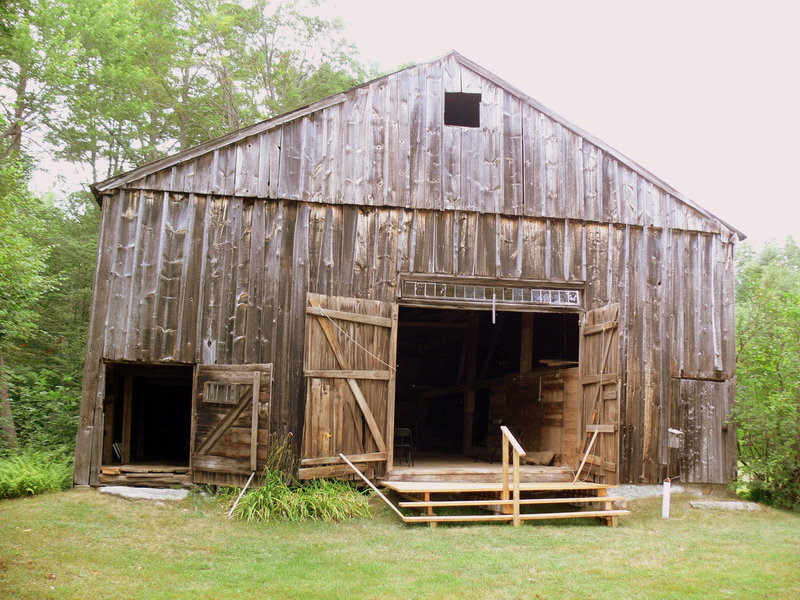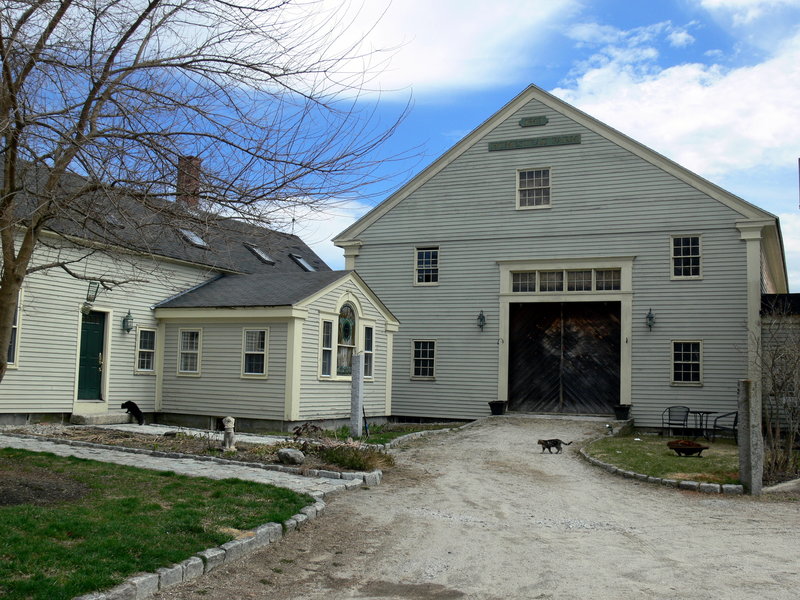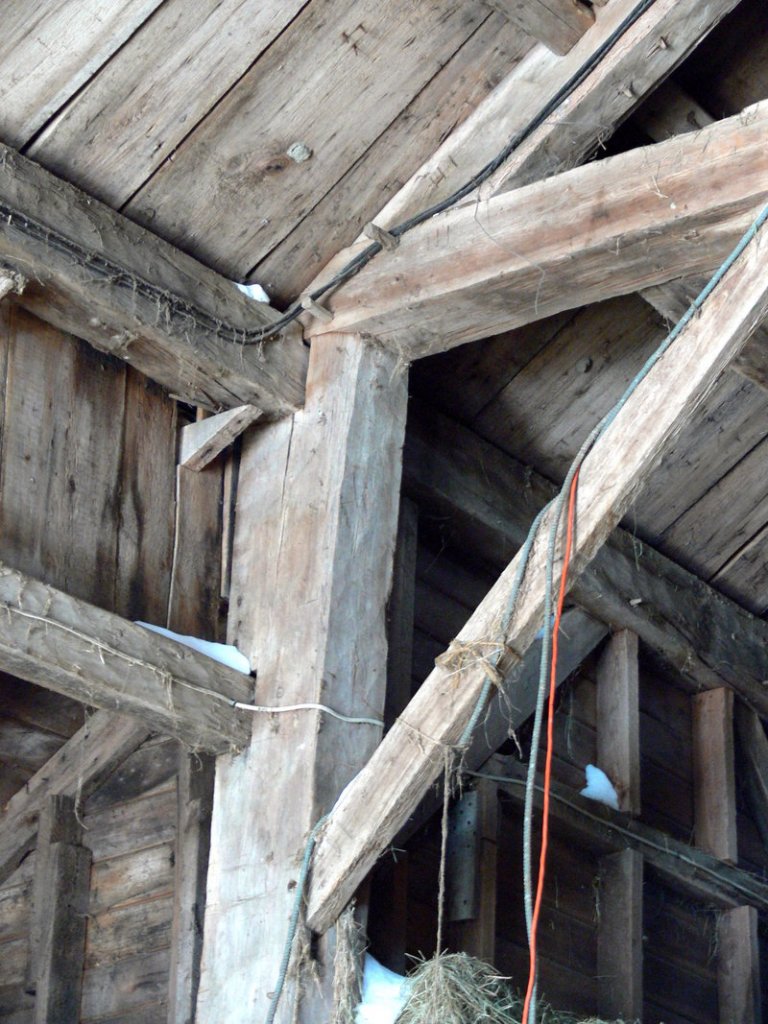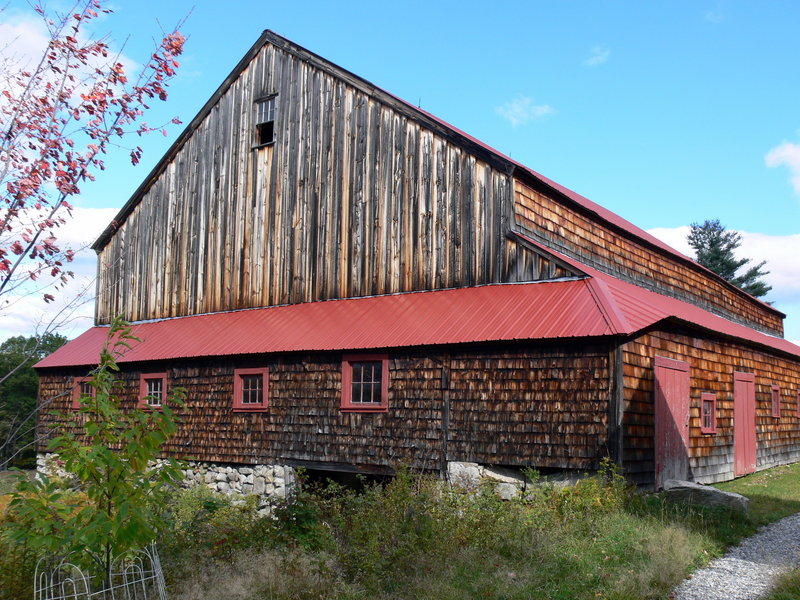There’s more to pre-Civil War barns than meets the eye. These hand-hewn frames are unlike any buildings made today. Local barns will be the focus of my forthcoming book, due out next fall.
WINDHAM HISTORY INSIDE
The interior of this circa-1800 barn in Windham sports an “English tying joint,” the section of the frame where post top, crosstie and rafter intersect. English settlers brought this Old World design with them to New England.
The joint dates to the medieval period (13th century) and “ties” the frame together in a very effective manner. It needs no hardware and is fashioned simply with wooden pegs.
To provide enough wood for the intersecting joinery, wall posts in these early barns flare ever wider toward the top. As such, a builder would invert a tree: The wider butt-end would naturally become the post’s top. The English tying joint was standard practice for more than 500 years of barn building.
EARLY HARRISON GEM
Believed to be the one of the oldest barns in Harrison, this circa-1812 specimen belongs to the Harrison Historical Society and sports an offset door and shallow roof pitch — classic early barn indicators.
Nails were at a premium in the old days, and this barn was never shingled or clapboarded. In fact, saving on nails was once so necessary builders cut a slot into the underside of the top exterior wall beams into which a barn’s vertical boarding could be fit, thus saving nails at the uppermost section of each board.
ADDITIONS IN SEBAGO
As family farms grew in the 19th century, expanding barns was a common practice. Over the years, this circa-1840s barn in the town of Sebago expanded in different ways. The original barn was lengthened, nearly doubling its footprint, before receiving several lean-to-like additions around its perimeter.
OFF CENTER IN NEW GLOUCESTER
This 1849 barn in New Gloucester has an offset door, a tell-tale pre-Civil War indicator. The offset was done to maximize space: Animals were stabled on the narrower side, which was invariably oriented to receive the day’s sun, helping cooped-up animals during a long Maine winter.
Conversely, hay was stored on the wider opposing side, which received little sun in summer. Hay, especially loose hay, needed to be kept cool in summertime as it was prone to spontaneous combustion. Many barns burned from these spontaneous hay fires.
For more on Maine’s barns, visit www.ourbarns.com.
Don Perkins is a freelance writer who lives in Raymond. He can be reached at: presswriter@gmail.com
Send questions/comments to the editors.






Success. Please wait for the page to reload. If the page does not reload within 5 seconds, please refresh the page.
Enter your email and password to access comments.
Hi, to comment on stories you must . This profile is in addition to your subscription and website login.
Already have a commenting profile? .
Invalid username/password.
Please check your email to confirm and complete your registration.
Only subscribers are eligible to post comments. Please subscribe or login first for digital access. Here’s why.
Use the form below to reset your password. When you've submitted your account email, we will send an email with a reset code.